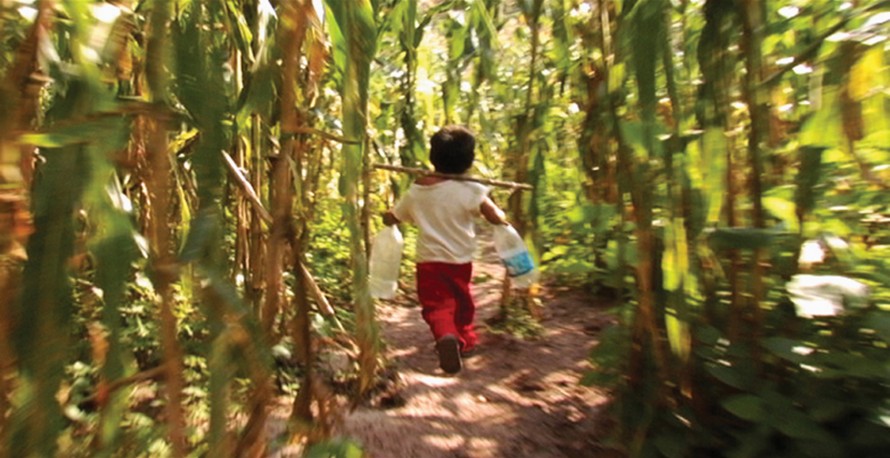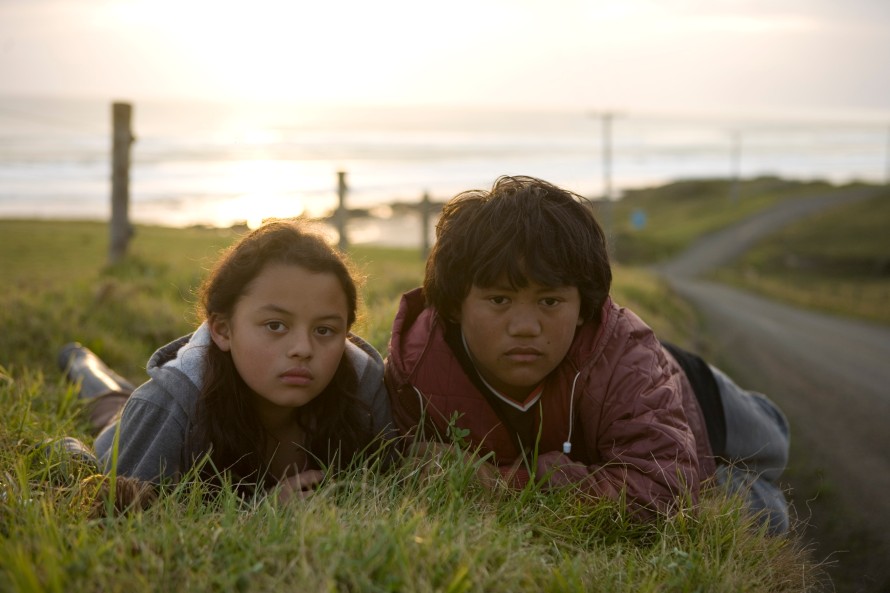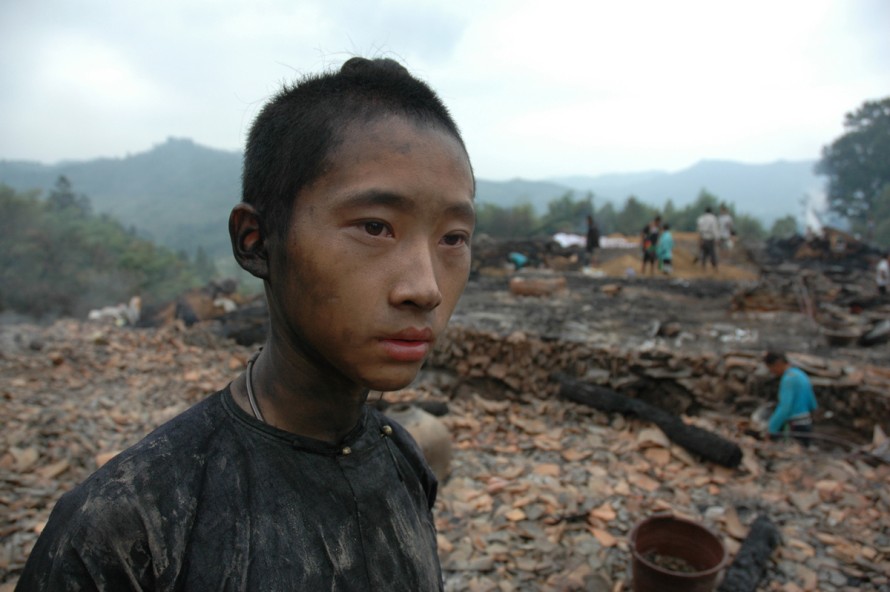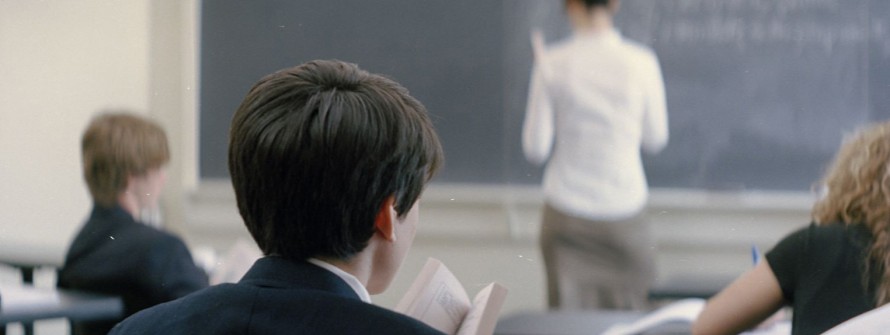2009 | Generation
Searching for Identity in Innovative Formats
This year a new team, Maryanne Redpath and her representative Florian Weghorn, took over responsibilities for the selection of films in the children’s and youth section Generation. Redpath and Weghorn have added new touches to the Kplus and 14plus programmes without sacrificing any of the tried-and-true qualities that make this section so popular with Berlinale audiences of all ages.

In the Kplus programme: Los Herederos by Eugenio Polgovsky
You have taken on the direction of Generation after having already spent many years in leadership positions in this section. What’s different for you this year and what innovations can we expect under your direction?
MR: It was not our stated goal to introduce changes, but a new management always brings with it a certain shift in emphasis—new ideas, a new atmosphere, new subjects. Many changes also follow invariably from the films we select.
FW: Last year, for example, we started programming documentaries in the 14plus competition, and we’re continuing that this year with Teenage Response in 14plus and, with Los herederos, for the first time in Kplus. A change like this began with the lucky find of a wonderful documentary we just couldn’t pass up. And since the response from the audience was also enthusiastic, this one selection led to a firmly established part of the section in the following year.
You’ve both always been interested in realistic subject matter and have picked films that successfully treat the most diverse – and not always easy – subjects in the feature film format. Why have you chosen now to foreground documentary storytelling even more in the area of children’s and youth film? Does this form have certain advantages over the feature film?
MR: You have to look at this issue more broadly. Many of the films we show have essential documentary qualities, such as the Turkish contribution Mommo by Atalay Taşdiken or Niloofar by Sabine El Gemayel in this year’s programme. Formally speaking these are both feature films, but the largely non-professional actors for the most part appear as themselves rather than playing their roles in a conventional sense. Along with the authentic locations, this gives viewers revealing insights into actual everyday lives as they follow the story. Fiction and non-fiction overlap.
FW: And the reverse is also true, since the documentary films we select also always pack a cinematic punch. Los herederos has a tremendous impact on screen, which allows its documentary aspects to be shown to the fullest advantage. If we have the same expectations of documentaries as we do of feature films, we end up with films that communicate their content in a far more complex way than conventional documentary formats like we are accustomed to from television.
MR: In this context I absolutely have to mention the Georgian feature The Other Bank. In the film, a boy who once fled from Abkhazia with his mother returns there in order to look for his father. We follow the boy from place to place – some of them quite dangerous – in a kind of road movie through Georgia. The film is extraordinarily political, precisely because it casts real-life conditions in poetic form.

Armagan Ballantyne's The Strength of Water
Familiar Points of View, New Perspectives
Germany is represented this year with, among others, Lars Büchel’s literary adaptation Lippel’s Dream. Several of the other projects in the programme were co-produced in Germany. The adaptation of a successful book was for a long time almost considered the only possible way to make a German children’s film. What is the situation of the German children’s film today?
FW: Being based on a book does not necessarily guarantee the success of a film in Germany, but experience shows that adaptations tend to reach a larger audience. My guess is that this factor will benefit the adaptation of Paul Maar’s book Lippel’s Dream, which we are showing as our opening film. But Lars Büchel’s adaptation is also a successful and exceptional work in its own right. It expertly unfolds its quite complex dramatic structure and the young actors together with the top-notch cast surrounding Moritz Bleibtreu and Anke Engelke deliver outstanding performances.
Are international co-productions with German participation becoming a trend?
FW: The Eagle Hunter's Son by René Bo Hansen is a good example of the interest on the part of German producers to use international co-productions to bring new, unconventional, and – in this case – original material to the screen. The Eagle Hunter's Son is a German-Swedish co-production with a Danish director and a Mongolian setting. Bringing together the right people is extremely important and national borders are increasingly being crossed in order to do so.
MR: The Strength of Water by Armagan Ballantyne is a Germany-New Zealand co-production—you can’t get much more far-flung than that. The story is very much based in New Zealand, a modern Maori tale deeply grounded in tradition. Co-producer Karl Baumgartner from Pandora Film is known for his skill in sniffing out authentic material. We’ve recommended the film for the ages twelve and up and are showing it in English with German subtitles – without German voice-over, in other words. This is something we introduced in Kplus last year. It is very important to us that the older children not only see the films in the original, but also hear them in the original, as is common practice almost everywhere else in the world. It’s also a good preparation for 14plus and the rest of the festival where films are shown with English subtitles.
When I was twelve I always wanted to see what the sixteen-year-olds were allowed to see. Are kids still like that today?
MR: Of course they are. And we don’t forbid it, but we do think carefully about our age recommendations. 14plus isn’t called 14plus for nothing, after all, and most of the audience members respect that. Sometimes we recommend a film for an older age group not because of its content, but for entirely practical reasons, such as in the case of difficult to understand accents like Scottish or Irish.
FW: We also encourage older 14plus audience members to go see certain Kplus films with German voice-over or subtitles. Many of the young people attending the festival are interested in Kplus films even if the characters in these films are sometimes a few years younger than they are.
MR: This issue is also very interesting in terms of subject matter. What films do I identify with? Where is my place in the world? When am I no longer a child? There are many children today who have to take on responsibility for themselves and their environment at a very early age.

Wang Jishuai in Lala's Gun
Looking for One’s Place in the World
The search for identity is actually a subject relevant to all age groups. It is perhaps particularly acute when we’re young, but adults certainly have to deal with it too. Or do you disagree?
FW: The search for identity is a very popular topic right now, and crops up in films for all age groups and in all sections of the Berlinale. Youth provides a wonderful dramatic conflict that can allow filmmakers to address all kinds of painful subjects. No one engages with problems more intensely than a young person who is forced to confront his or her own traditions or culture and rub up against them.
MR: A good example of this is the Chinese contribution Lala’s Gun by Ning Jingwu. Among the Hmong people, a minority in China, there is a tradition of fathers giving their sons a gun as an initiation rite. But the main character in this film grew up without his father, so he sets out in search of him in order to continue an old tradition and make it his own. It’s a real coming of age story, only set in an exotic cultural milieu.
Which is interesting not only for young people, but for adults too.
FW: Cinema should be an entertaining experience for everyone and not a school lesson about the search for identity aimed at particular target groups. Still, subject matter that directly relates to the lived reality of young people is especially intense and gripping for the 14plus audience members, who are roughly in the same age group. And that of course is the kind of thing we specifically set out to find.
Several of the Generation films this year explicitly address the – also not always easy – living conditions and problems in affluent Western societies, such as drugs in Afterschool and Cherrybomb or suicidal thoughts in My Suicide. The growing rate of poverty in many countries around the world might lead us to assume the opposite. Or is this kind of comparison not very helpful?
MR: I think you can put it that way, although we do try to avoid dividing the world into different problem areas. Many young people in Western societies don’t have to worry about their survival; their problems have more to do with emotional poverty—which is no less difficult. They often lack traditions and social as well as societal points of reference for developing their own philosophy of life. This is the case in all three of the films you mentioned—on the surface it doesn’t seem like these young people have anything they could or need to rebel against, but they still rebel. And of course they ask themselves why they act the way they do.
Do you choose films with the intent of sparking discussions?
FW: We just choose the best films we can get. Our audience’s thematic and formal preferences are extremely diverse, which generates a tremendous amount of energy every year. So you can count on there always being a number of good discussions at our screenings.

Afterschool by Antonio Campos
Classical Subjects Revamped
Do young people today have an increased interest in unusual forms of media and film, or are they at least more open to them than previous generations were? Does this year’s programme also take up the mediatization of society by means of computer games and the Internet like last year’s did with Ben X?
MR: It certainly does. In My Suicide by David Lee Miller a young man announces that he is going to stage his own suicide on video. This film uses multi-media in the true sense of the word, ranging from Internet clips to CCTV recordings to found footage from other films. The main character brings together all these forms of media in his home studio and uses them to construct his own version of the world. Incidentally, this film has its viral origins in a youth project that also maintains a website for youth at risk of suicide.
FW: You hear again and again that young people only want to see films where no shot lasts longer than a few seconds. For one thing this just isn’t true; Afterschool with its very unique and gentle visual language is evidence to the contrary. For another, simply employing an MTV or YouTube aesthetic isn’t enough to make a good youth film. My Suicide explores a highly relevant issue and grounds its multimedia stream of consciousness in an otherwise quite classical three-act dramatic structure.
Legends and fairy-tales are also featured in Kplus, in Brendan and the Secret of Kells for instance or Who is Afraid of the Wolf. Is this the kind of material that is familiar territory for Generation? What is unique about this year’s offerings?
MR: Traditional fairy-tales are woven into the stories of these films, such as Little Red Riding Hood in Who is Afraid of the Wolf by Maria Procházková. But there are also many other levels on which one can view these films and engage with them. Literal adaptations of traditional fairy-tales don’t work as well today as they used to, in my opinion.
FW: It is the proximity of fantasy and reality that makes these films so powerful. Who is Afraid of the Wolf is about a girl’s imaginary escape into the forest in response to her parents’ impending separation. The real fears of the girl are conveyed in a palpably intense way on the psychological level of the fairy-tale.
MR: In Brendan and the Secret of Kells by Tomm Moore and Nora Twomey, an Irish folk fairy-tale from the Middle Ages is given a new life on screen. The story in the film surrounds the “Book of Kells,” which is very arresting even just on a visual level. The film turns it into a kaleidoscope of multidimensional images that brings tears to your eyes. You can see the craftsmanship and experience of the associated animation studios in every image. Truly a unique film that will take your breath away whether you’re a child or an adult.